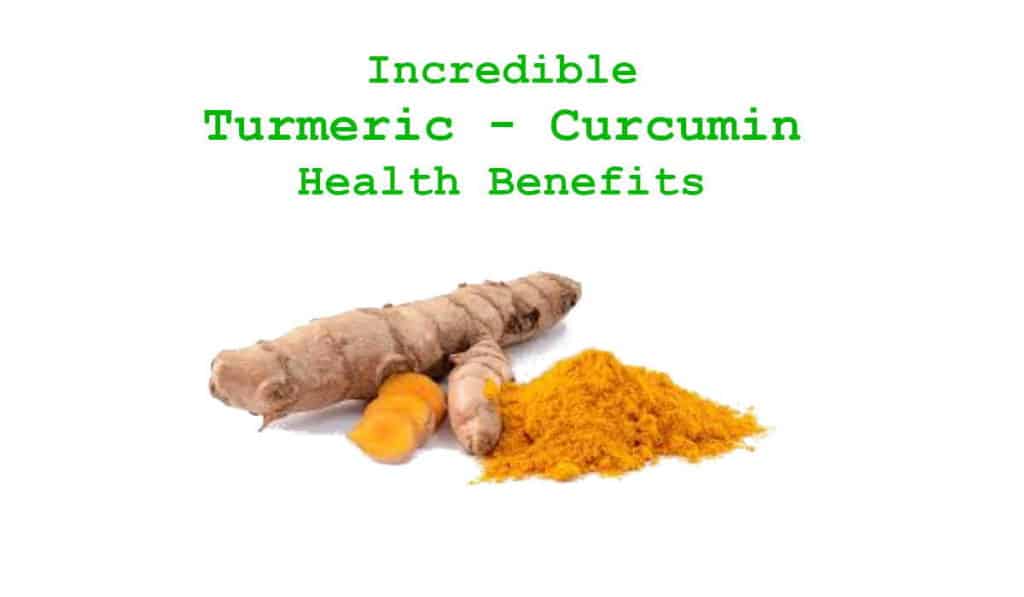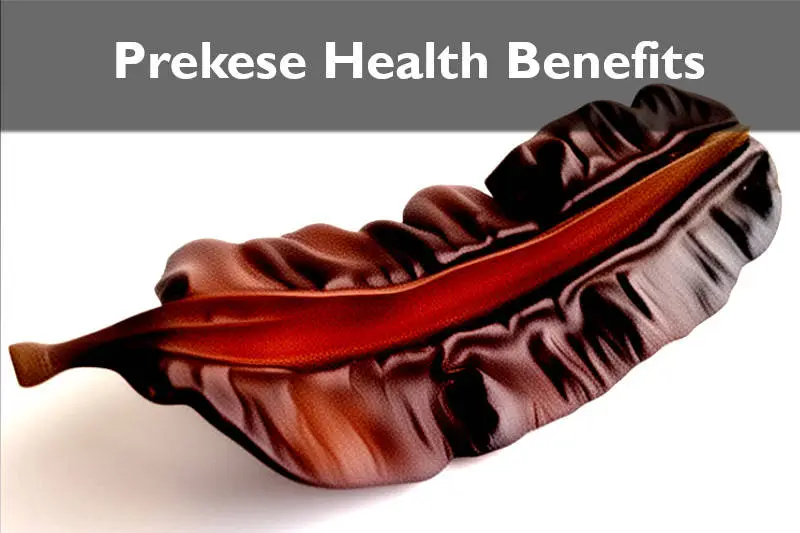11 Great Health Benefits of High Fiber Diet and Food Sources
Do you know? More fiber in your food is good for your health and to live longer. Many people are not aware of the simple truth. Some are aware of but do not know what the health benefits of a high-fiber diet can bring for them.
It is very important to eat fiber-rich food considering its enormous health benefits.
The sad news is the level of the diet of adults and Children in the US. Their dietary fiber intake is less than half of the recommended levels. The recommended levels are set by the American Dietary Guidelines. Adults with high dietary fiber intake have a lower risk of having many health conditions. That is for real!
Choosing nice and tasty dietary fiber-rich food is not difficult. Learn how to make it part of your meals and snacks. It is also important to know how much fiber-rich dietary fiber food you should eat every day.
Highlights of Dietary Fiber Intake Health Benefits
Here is a list of enormous health benefits of a high-fiber diet you cannot imagine: –
- Good digestive health
- Normalizes bowel movements
- Lowers cholesterol levels
- Controls blood sugar levels
- Weight loss or healthy weight
- Lower risks of coronary heart diseases
- Reduction in the prevalence of strokes
- Reduction in the prevalence of hypertension
- Lower risk of developing type2 diabetes
- Protection against the Development of Obesity
- Reduces the risk of Diverticular disease
- Prevention and relief from constipation
- Reduces breast cancer risks
- Decreases the prevalence of gastroesophageal reflux disease (GERD)
- Supports Immune system
- Eating fiber-rich food provides childhood future health benefits
- Live longer in good health and enjoy life
Let us see the insights of dietary fiber before analyzing in detail its health benefits.
What is Dietary Fiber?
Experts are finding it a bit difficult to define exactly what is dietary fiber. This is according to the abstract published in Science Direct (1). Anyway, it is not our worry at all. All that we want to know is what are the health benefits and how to get from our food. What dietary fiber-rich food we should have in our diet?
Dietary fiber is a plant cell wall. Associated with substances that are resistant to digestion by human alimentary enzymes. Meaning our body cannot digest or absorb. It simply passes through our digestive tract almost intact.
Fats, protein, and carbohydrates (except fiber) all are broken down. All are broken down in our digestive system and get absorbed into our bloodstream.
Types of Dietary Fiber
There are two types of dietary fiber. Soluble and Insoluble dietary fiber. Both are beneficial to our health.
Soluble Dietary Fiber
Dietary fiber that dissolves in water is known as soluble fiber. When it dissolves in water it becomes like a gel. Soluble fiber has many health benefits. Keep reading to understand more about the health benefits of the soluble fiber diet.
Insoluble Dietary Fiber
This dietary fiber does not dissolve in the water hence called insoluble fiber. Assists in moving consumed food through the digestive tract. Insoluble fiber promotes regularized digestion process and prevents constipation.
Fermentable fiber
This type of fiber can be of both soluble and insoluble fiber. Mostly they are soluble fibers only. Fermentable fiber assists in increasing the good gut bacteria in the colon.
Health Benefits of High Fiber Diet
Health Benefits of a Soluble Fiber Diet
Soluble dietary fiber can lower bad (LDL) cholesterol and glucose levels in our blood. Here are the highlights of the health benefits of the soluble fiber diet.
1. Soluble Dietary Fiber and Cardiovascular Health
Studies are firming up the stand that soluble fiber lowers LDL cholesterol in our blood. It results in soluble fiber reducing the risks of coronary heart disease (2). Oat is rich in soluble dietary fiber Oat β-glucan. This fiber plays a major role in lowering bad cholesterol.
2. Coronary Heart Disease Prevalence and Dietary Fiber
Prospective studies on over 158,000 people proved positive heart disease prevalence. The CHD prevalence is far less in individuals who took high dietary fiber.
CHD is higher in those with a lower intake of dietary fiber. The high dietary fiber intake provides protection against CHD (3).
3. Reduces Ischemic Stroke Prevalence
In a study, over 134,000 individuals participated. People who took a high intake of dietary fiber had a lower risk of ischemic stroke (4).
4. Dietary Fiber Lowers Hypertension
A study was carried out involving French adults in relation to high dietary fiber intake. It showed a lower prevalence of hypertension. (5)
5. Lowers Fat Absorption
This is good for weight loss. With soluble fiber with water forms into a gel. This thick gel blocks the getting absorbed and digested.
6. Diabetes Prevention and Management with Dietary Fiber
Reports say that Diabetes is increasing worldwide at an alarming rate (6).
Dietary fiber helps to manage sugar levels in type 2 diabetes. Increased intake of dietary fiber reduces the risk of developing type 2 diabetes. Soluble fiber slows down the digestion of carbs. Which soluble fiber prevents sharp sugar level spikes in the blood.
Many studies support that direct link to type 1 and type 2 diabetes. A high intake of dietary fiber improves these health conditions greatly (7,8,9). In addition to increasing soluble fiber consider also adopting herbal remedies to control type diabetes.
7. Dietary Soluble Fiber is a Good Food for Gut Bacteria
Soluble fiber is fermentable in the colon. It helps good gut bacteria to develop well and live longer. Thereby giving great health benefits to your digestive system.
Health Benefits of an Insoluble Fiber Diet
The prime benefit of insoluble fiber is helping in the smooth movement of food passing through the digestive tract. Here is a quick list of health benefits of insoluble fiber include:
1. Regulating Bowel Movements and Prevent Constipation
Insoluble fiber softens the poop or stool. It absorbs water and increases the size and weight of your poop. It makes poop bulky. The bulky stool is easier to pass through the anus. It prevents gastrointestinal blockage. Insoluble dietary fiber also helps those with loose or watery stools. It absorbs water and makes the stool become a bit soft and solid.
Here is an article detailing why dietary fiber is important for your digestive health and the role of insoluble fiber.
2. Insoluble Dietary Fiber Support Bowel Health
The insoluble fiber reduces the risks of developing hemorrhoids and diverticular disease. Diverticular disease is the development of tiny pouches in the bowel.
It reduces the risks of colorectal cancer and, distal colon cancer in the bowel. This is according to a study published in the US National Library of Medicine (10).
Dietary fiber from whole grains and cereals has a link to reducing the risks of many health concerns. Such as cancers in the prostate, lung, colorectal, rectum, or ovaries.
Combined Health benefits of Insoluble and Soluble fiber
1. Dietary Fiber Contributes to Healthy Weight and Weight Loss
For the high-fiber diet for weight loss, insoluble fiber comes into play and it is effective. Insoluble dietary fiber assists in weight loss.
Insoluble dietary fiber physically occupies the space in the stomach and intestines. Thus, after eating rich insoluble fiber you will feel full for a long time. It slows down the digestion process and makes you eat less food. This results in having fewer calories in a day. Less calorie intake means you lose weight.
Read the article on how high fiber content of durum wheat semolina and its health benefits. Semolina is used for making high-quality spaghetti. Here are the spaghetti’s health benefits including weight loss.
2. How does Dietary Fiber Help the Immune System?
As you know the largest organ in the human body is the gastrointestinal tract. Good digestive health naturally improves the immune system. The soluble fiber is also known as prebiotic fiber.
Food Sources of Soluble and Insoluble Fiber
Rich food sources of soluble fiber are found in: –
- beans and peas
- fruits (oranges and apples)
- oats (oats bran and oatmeal) and
- vegetables (carrots)
- barley
- psyllium
Rich food sources of insoluble fiber are found in: –
- nuts and seeds
- dark green vegetables
- wheat bran and whole-grain foods (whole-grain bread, pasta, cereals, and brown rice)
Food Sources of Dietary Fiber in Grams and Calories
Based on Dietary Guidelines for Americans by the Office of Disease Prevention and Health Promotion (ODPHP).
| Food Type | Food | Standard Portion Size | Calories | Grams | Calories/ 100 Grams |
|---|---|---|---|---|---|
| Grains | Whole wheat spaghetti, cooked | 1/2 Cup | 87 | 3.2 | 124 |
| Grains | Pearled barley, cooked | 1/2 cup | 97 | 3.0 | 123 |
| Grains | Wheat bran flakes ready-to-eat cereal (various) | 3/4 cup | 90 to 98 | 4.9 to 5.5 | 310 to 328 |
| Grains | Quinoa, cooked | 1/2 cup | 111 | 2.6 | 120 |
| Grains | Oat bran muffin | 1 small | 178 | 3.0 | 270 |
| Grains | Popcorn, air-popped | 3 cups | 93 | 3.5 | 387 |
| Grains | Whole wheat paratha bread | 1 ounce | 92 | 2.7 | 326 |
| Grains | Plain rye wafer crackers | 2 wafers | 73 | 5.0 | 334 |
| Vegetables | Green peas, cooked | 1/2 cup | 59 to 67 | 3.5 to 4.4 | 69 to 84 |
| Vegetables | Sweet potato, baked on the skin | 1 medium | 103 | 3.8 | 107 |
| Vegetables | Soybeans, green, cooked | 1/2 cup | 127 | 3.8 | 141 |
| Vegetables | Pumpkin, canned | 1/2 cup | 42 | 3.6 | 34 |
| Vegetables | Potato, baked, with skin | 1 medium | 163 | 3.6 | 94 |
| Vegetables | Mixed vegetables, cooked from frozen | 1/2 cup | 59 | 4.0 | 65 |
| Vegetables | White beans, canned | 1/2 cup | 149 | 6.3 | 114 |
| Vegetables | Kidney beans, all types, cooked | 1/2 cup | 112 | 5.7 | 127 |
| Fruits | Raspberries | 1/2 cup | 32 | 4.0 | 52 |
| Fruits | Pears, dried | 1/4 cup | 118 | 3.4 | 262 |
| Fruits | Apple, with skin | 1 medium | 95 | 4.4 | 52 |
| Fruits | Banana | 1 medium | 105 | 3.1 | 89 |
| Fruits | Orange | 1 medium | 69 | 3.1 | 49 |
| Fruits | Guava | 1 fruit | 37 | 3.0 | 68 |
| Legumes, nuts & seeds | Split peas, cooked | 1/2 cup | 114 | 8.1 | 116 |
| Legumes, nuts & seeds | Lentils, cooked | 1/2 cup | 115 | 7.8 | 116 |
| Legumes, nuts & seeds | Black beans, cooked | 1/2 cup | 114 | 7.5 | 132 |
| Legumes, nuts & seeds | Chia seeds, dried | 1 Tbsp | 58 | 4.1 | 486 |
| Legumes, nuts & seeds | Almonds | 1 ounce | 164 | 3.5 | 579 |
| Legumes, nuts & seeds | Pistachios, dry roasted | 1 ounce | 161 | 2.8 | 567 |
| Legumes, nuts & seeds | Sunflower seed kernels, dry roasted | 1 ounce | 165 | 3.1 | 582 |
How much fiber do you need in a day?
As mentioned earlier, people are not getting enough fiber diet today. It has become a nutrient public concern. The main reason is that a lower fiber diet is linked to potential health risks.
FDA recommends you aim at 25 grams of dietary fiber against a 2000-calorie diet a day. Depending on your needs for daily calories you need to adjust your fiber intake.
Dietary Recommendations for Diabetes Patients
Here is the extract on dietary recommendations for diabetes. This is published by the Journal of the American College of Nutrition.
- Achieve and maintain correct body weight using the Body Mass Index method (≤ 25kg/m2)
- Carbohydrate intake to 55 to 65 % of energy. (From wholegrain, legumes, vegetables, and fruits)
- dietary fiber intake 25 to 50gram day (15–25 g/1000 kcal)
- protein intake of 12–16% of energy
- total fat intake to <30% of energy
- saturated/trans fatty acids <10% of energy
- monounsaturated fat, 12–15% of energy
- polyunsaturated fat, <10% of energy
- cholesterol, <200 mg/day
Precautions for Increasing Dietary Fiber in Your Diet
This is due to a sudden increase in dietary fiber may cause gastrointestinal effects. Such gastrointestinal effects are including:
- Softer Stools (not diarrhea)
- Increase in stools
- Increase in flatulence
Resulting from fermentation and bulking effects of dietary fiber in the gastrointestinal tract. Thus, observe a gradual increase in dietary fiber in your diet. This way your system will achieve the gastrointestinal tolerance of dietary fiber fast (12)
How to increase high-fiber diet intake?
- Eat whole fruits instead of drinking fruit juices
- Replace white rice, bread, and pasta with brown rice and whole-grain products
- For breakfast, choose cereals that have whole grain as their first ingredient
- Snack on raw vegetables instead of chips, crackers, or chocolate bars
- Substitute beans or legumes for meat two to three times per week in chili and soups.
- Avoid drinking fruit juices. Start eating whole fruits instead.
- Replace foods like white bread, white rice, and pasta made from refined wheat from your diet. Eat more brown rice and whole-grain foods. Opting for durum wheat semolina which gives you more fiber.
- Eat whole-grain cereals for breakfast
- Skip fast food, crackers, chocolates, and chips for snacks. Instead, eat raw vegetables.
- Considerably reduce meat. Increase the intake of legumes and beans
Takeaway
The health benefits of high Fiber diet are immense. Dietary fiber in your daily diet cannot be just ignored. Today, there is a concern that people are not taking enough dietary fiber. This should essentially change.
Individuals regularly taking high dietary fiber have a lower risk of developing: –
Coronary heart disease, stroke, hypertension, diabetes, obesity, gastroesophageal reflux disease, duodenal ulcer, diverticulitis, constipation, and hemorrhoids.
High dietary fiber intake lowers serum cholesterol levels and blood pressure. It also improves your immune system, glycemia, and insulin sensitivity. Weight loss is another benefit that can be achieved.
Those who take an increased intake of dietary fiber have good heart condition, digestive health, and balanced sugar levels in the blood. The prebiotic fibers enhance your body’s immune system.
Increased dietary fiber intake gives children stable healthy growth and all benefits just adults.
FAQ
What happens when you eat too much fiber?
A sudden increase in the intake of dietary fiber may disturb your digestive system. It can cause you bloating, gas, constipation, dehydration, abnormal pain, nausea reduced blood sugar levels, and, in some cases intestinal block. You will lose weight and gain the correct healthy weight.
So always increase your dietary fiber intake gradually to avoid such problems. To get relief from such problems, drink more water, avoid fiber-rich foods, and do light exercises.
Is fiber good for gut health?
Yes, and have no doubt about it. In fact, dietary fiber is much needed to maintain the good health of your digestive system. Dietary fiber helps your gut system for better digestion, prevents constipation, and further becomes food for good gut bacteria. Additionally, it helps the overall health of your body by reducing the risks of developing health problems. The benefits of a high-fiber diet are enormous and cannot be compromised against a healthy lifestyle.
What happens when you don’t get enough dietary fiber?
You may end up with many health issues with insufficient intake of dietary fiber in your diet. It increases the chances of having coronary heart disease, diabetes, strokes, constipation, and gastroesophageal disorders.
So always look for dietary fiber-rich food in your diet. Plan accordingly and increase the intake of dietary fiber food gradually.
What foods are highest in fiber?
Dietary finer food is mainly whole grains, vegetables, fruits, and seeds & nuts. Refer to the chart above gives you in-depth information about dietary fiber-rich food.
Trust in your purchase:
Every product featured on our site has been carefully researched and selected based on quality, customer ratings, and positive reviews to ensure you receive excellent value for your money.
Please note:
This post contains affiliate links. If you make a purchase through these links, we may earn a small commission at no additional cost to you. This helps support our site and allows us to continue bringing you valuable content. Thank you!
Thank you for your precious time spent with NobleHomeRemedies.
You may also like:
Rice Milk Benefits
Rice Milk Benefits – Health Benefits, Skin Care and Hair Care Benefits Rice milk benefits…
Benefits of Cinnamon Tea
6 Major Health Benefits of Cinnamon Tea: Safe to Drink There are numerous health benefits…
Fiber for Digestive Health
Fiber for Digestive Health: 5 Great Benefits for Healthy Lifestyle Several articles have been published…
Turmeric Health Benefits and Facts
7 Incredible Turmeric Health Benefits and Facts What is Turmeric (Curcumin)? Turmeric is a plant…
Is durum wheat semolina healthy?
Is durum wheat semolina healthy?: 5 Unique Benefits Health-aware people have many questions about Durum…
Prekese Health Benefits
7 Prekese Health Benefits: Empower Your Body with Naturally! In the midst of a fast-paced…






